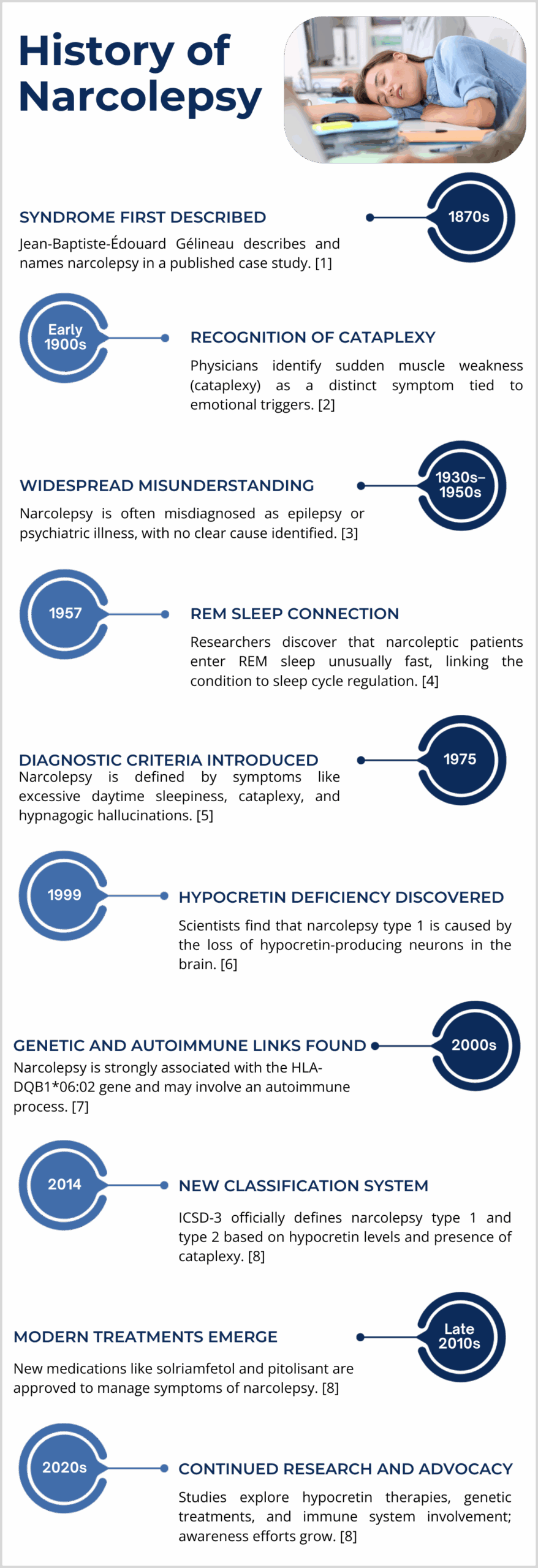History of Narcolepsy
Awareness, timely diagnosis, and individualized care are essential to improving the lives of people living with narcolepsy.
Narcolepsy is a complex neurological condition that has puzzled researchers for over a
century. From its early classification in the 19th century to recent advances in genetics and immunology, the journey of understanding narcolepsy reflects the broader evolution of neuroscience and sleep medicine. This timeline offers a look at key milestones in the recognition, study, and treatment of narcolepsy.

References
- 1. Gélineau, J. B. É. (1880). De la narcolepsie. Gazette des Hôpitaux Civils et Militaires.
- 2. Westphal, C. (1877). Über eine besondere Form der periodischen Schlafsucht. Archiv für Psychiatrie und Nervenkrankheiten.
- 3. Daniels, L. E. (1934). Narcolepsy. Medicine, 13(1), 1–122.
- 4. Dement, W., & Carskadon, M. (1967). Clinical and EEG characteristics of narcolepsy. Electroencephalography and Clinical Neurophysiology.
- 5. American Sleep Disorders Association (1979). Diagnostic Classification of Sleep and Arousal Disorders.
- 6. Nishino, S., Ripley, B., Overeem, S., Lammers, G. J., & Mignot, E. (2000). Hypocretin (orexin) deficiency in human narcolepsy. Lancet, 355(9197), 39–40.
- 7. Hallmayer, J. et al. (2009). Narcolepsy is strongly associated with the T-cell receptor alpha locus. Nature Genetics, 41, 708–711.
- 8. American Academy of Sleep Medicine. (2014). International Classification of Sleep Disorders, Third Edition (ICSD-3).
Join Our NapChat Digital Community to Learn More

